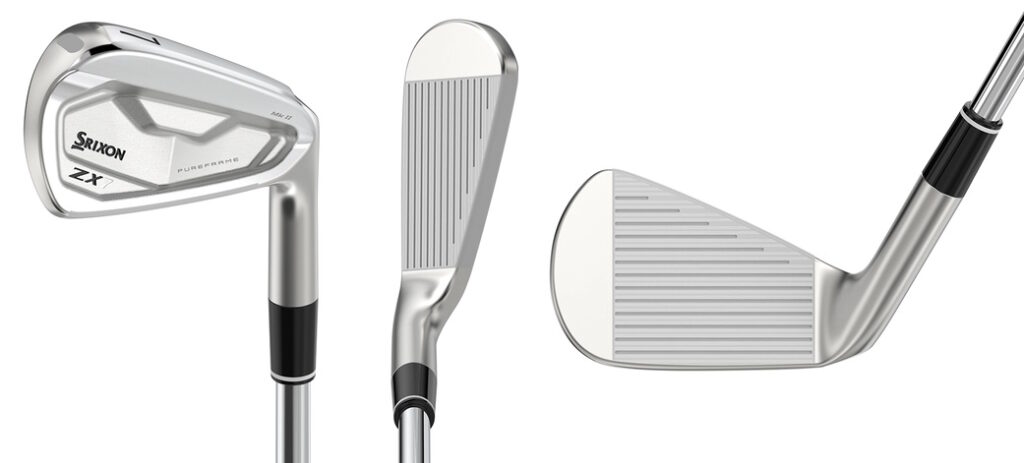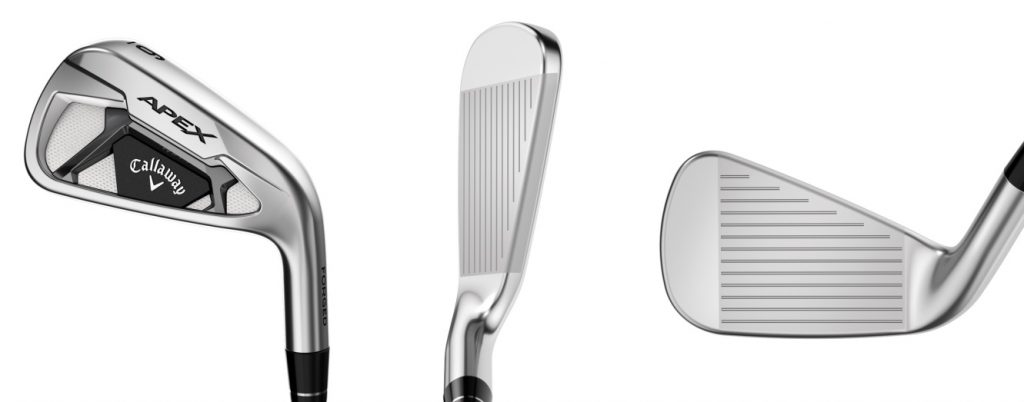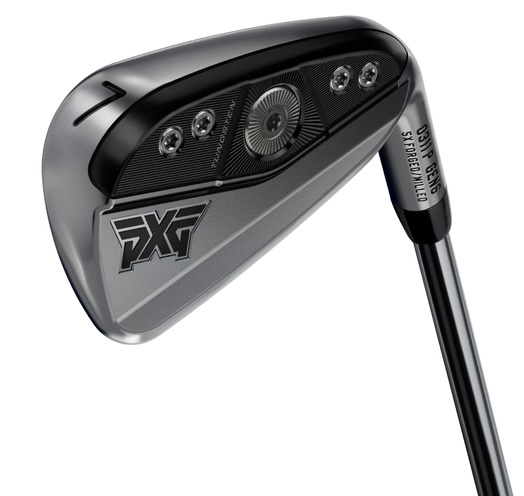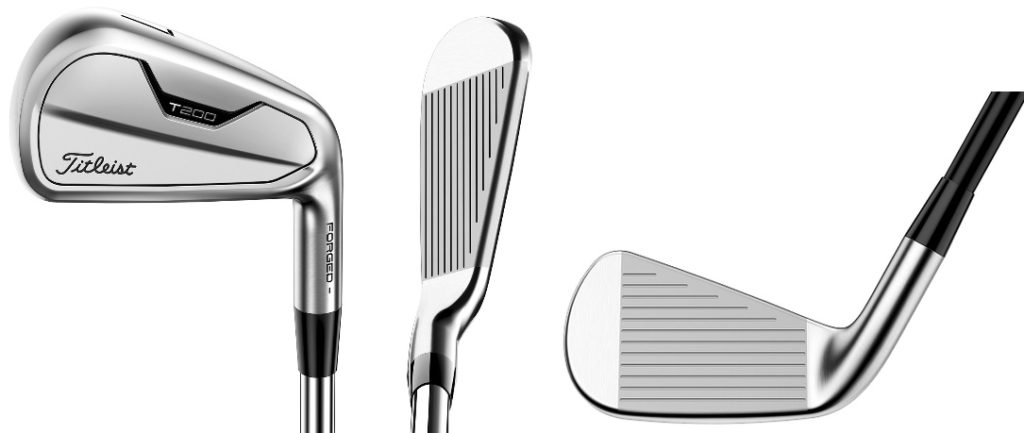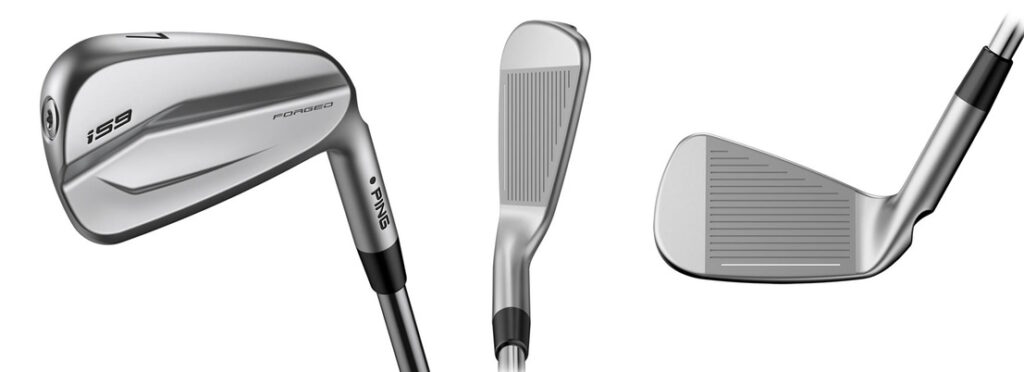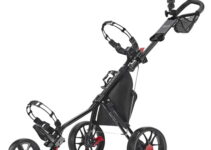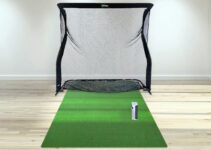Golfstead is reader-supported. When you buy through links on the site, we may earn an affiliate commission at no extra cost to you. Our affiliations include, but are not limited to, the eBay Partner Network and Amazon Associates.
Irons are typically the most expensive part of your golf equipment, and this doesn’t change in the case of low handicappers.
As a low handicapper with a handicap in the range of 1-10, this might not be your first time buying a set of irons. You have likely already been gaming a set (often with added forgiveness) and are ready to take your equipment to the next level.
While at one point you may have prioritized distance and forgiveness, because your skill in the game has improved, these qualities are no longer as important.
Typically, low handicappers will want to prioritize control and workability but still maintain a certain amount of forgiveness for those occasional mis-hits. On the other hand, some low handicappers may want to feel secure with game-improvement irons geared towards mid or even high handicappers.
In this article, we’ll give you a few guidelines as to what you should look for in a low-handicap golf iron set, and also review and compare a few of the best irons on the market for low handicappers that were released for the most current golf season or any year prior.
Note: Golfstead has tested and/or conducted in-depth research into all of the products featured in this guide. Our editorial process for these rankings takes into account a mix of many factors which may include performance, reliability, usability, value for money, cost, and the general consensus from other users of the product. The list that follows may be reassessed or updated over time. We do not guarantee that other users will have the same or similar experience with the products as described on this page.
Our Top Picks For Irons For Low Handicappers
Based on our own testing, research, and experience, here are our top selections:
- Callaway Rogue ST Pro Irons
- TaylorMade 2023 P770 Irons
- Cobra 2022 KING Forged Tec Irons
- Srixon ZX7 Mk II Irons
- Callaway Apex 21 Irons
- PXG 0311 P GEN6 Irons
- Titleist 2021 T200 Irons
- PING i59 Irons
1. Callaway Rogue ST Pro Irons
If we had to recommend one iron out of all the iron models we’ve tested, it would be the Rogue ST Pro by Callaway.
Designed for single-digit handicap golfers and containing various cutting-edge technologies, the Rogue ST Pro combines a sleek, compact, workable players shape with a nice dose of speed and forgiveness.
This iron is considered a “players distance” iron, with both game-improvement and players elements. It boasts a 5/5 (100% recommended) average customer rating on the Callaway store and won a gold medal on the 2022 Golf Digest Hot List.
Its key technologies are:
- 450 Steel & A.I. Flash Face: a complex face architecture unique to every iron in the set increases launch, improves spin consistency, optimizes landing angles, and boosts ball speeds (COR) to unprecedented levels. This combines with high-strength 450 steel to further increase ball speeds across the face.
- Precision Tungsten Weighting: the center of gravity (CG) is precisely located with up to 48g of high-density tungsten, improving launch conditions and speed across the entire face.
- Urethane Microspheres: these provide the benefits of urethane (absorbing unwanted vibrations and improving sound & feel) while still retaining the very high COR of the Flash Face Cup. Now, the microspheres are shifted farther up the face to the sixth groove.
The stock steel shaft is the Project X Rifle 105 Tour Flighted, and the stock graphite shaft is the Mitsubishi TENSEI AV White (75 and 85). The stock grip is the Golf Pride Tour Velvet 360. Custom options are, of course, available.
| Loft | 19°-48° (3-AW) |
| Lie | 60°-63.5° (3-AW) |
| Length | 35.5″-39″ (AW-3) |
| Offset | 1.7mm-4.2mm (AW-3) |
Pros
- very long & forgiving
- sleek, refined muscle back aesthetic
- surprisingly easy to launch
- good workability
- matches or outclasses the MAVRIK Pro
Cons
- $200 more expensive than the Rogue ST MAX and MAX OS
- short iron flight is a little too low and hot
- feel is a little firm
Final Thoughts
Many low handicappers are seeking great speed, forgiveness, and a traditional players shape with good workability. If you fall in this category, the Callaway Rogue ST Pro is for you.
Having said that, some may find that the irons, particularly the short irons, come into greens a little too hot because of how fast the face is. This is where getting the right configuration and shaft can help a lot.
Nonetheless, the Rogue ST Pro strikes a wonderful balance between GI and players performance.
2. TaylorMade 2023 P770 Irons
Founded in 1979 by Gary Adams, TaylorMade has grown to become one of the most well-known and successful brands in golf.
The 2023 iteration of TaylorMade’s P770 iron puts elevated forgiveness, distance and feel in a compact players shape. In fact, the P770 is ideal for low handicappers who want higher trajectories and more control into greens compared to traditional “players distance” irons.
The key technologies are:
- SpeedFoam Air: this proprietary, super-light urethane foam is 69% less dense than in the 2020 P770 irons, which improves speed and performance across the face.
- FLTD CG: this strategic design, which stands for ‘Flighted Center of Gravity’, consists of a progressive CG that is lowest in the long irons (lower than the previous generation) for higher launch and higher in the shorter irons for more precise control.
- Forged Hollow-Body Construction: includes a thin, forged 4140 steel face and a soft 8620 carbon steel body.
- Tungsten Weighting: up to 45g of tungsten optimizes the center of gravity (CG) and improves forgiveness.
- Thru-Slot Speed Pocket: a slot at the bottom of the sole that is designed to increase flexibility, ball speeds and forgiveness on shots hit low on the clubface, which is a common mis-hit area.
- Progressive ICT: unique for each iron in the set, this is a variable face thickness designed to improve accuracy and ball speeds in off-center regions.
The stock steel shaft is the KBS TOUR. The stock grip is the Golf Pride ZGRIP 360.
| Loft | 19.5°-51° (3-AW) |
| Lie | 60.5°-64° (3-AW) |
| Length | 35.5″-39″ (AW-3) |
| Offset | 1.6mm-3.3mm (AW-3) |
Pros
- looks a little better than the previous P770
- trajectories are not overly hot
- very forgiving
- feel is stable and consistent
- great control and consistency
Cons
- probably not enough improvement over the 2020 P770 to justify upgrading
Final Thoughts
Compared to the TaylorMade 2020 P770 iron, the 2023 version launches a little higher, has a slight edge in forgiveness, and in our opinion, has an even sleeker look.
For low handicappers who are looking for great forgiveness but also great control into greens, you can’t do much better than this model, especially if you prefer TaylorMade clubs.
3. Cobra 2022 KING Forged Tec Irons
Cobra Golf was founded in 1973 by amateur golf champion Thomas Crow, and it has since grown to be one of the biggest brands in golf equipment, maintaining endorsement deals with many top pros.
Their 2022 KING Forged Tec irons, which enjoy high ratings from critics, are engineered to deliver distance and forgiveness in a refined players shape that also promotes pure feel, precision and workability.
Key features include:
- a PWRSHELL forged face cup technology that wraps over the sole of the iron, increasing launch and increasing speed over the entire face. With the 2022 KING Forged Tec, the PWRSHELL face is thinner than ever to produce even more ball speed.
- a five-step forged 1025 carbon steel body and face for soft feel preferred by better players
- a hollow-body design
- a flexible foam insert which creates an elastic rebound effect that enhances feel and feedback
- 20g of tungsten positioned in the toe which optimizes the CG location and adds stability
- a sleeker design consisting of a thinner top line and reduced offset
The stock steel shaft is the KBS $-TAPER LITE, and the stock grip is the Lamkin Crossline STD 58R. With a purchase of 2022 KING Forged Tec irons, you’re also eligible to receive free Arccos Smart Sensors.
| Loft | 19°-49° (3-GW) |
| Lie | 60.5°-64° (3-GW) |
| Length | 35.75″-39.25″ (GW-3) |
| Offset | 1.5mm-3.9mm (GW-3) |
Pros
- attractive brushed steel finish
- exceptional workability
- affordably priced
- fast and forgiving
- phenomenal feel and sound
Cons
- profile may be too slim for some
Final Thoughts
There is really nothing that the Cobra KING Forged Tec iron does poorly. Distance, forgiveness, feel, workability, controllability, and looks are all there.
This gem of an iron, which is perhaps not as well-known as other models, could be a game-changer for low handicappers looking to bag new clubs. However, we suggest steering clear of the Arccos sensors and instead looking at other options for performance analysis.
4. Srixon ZX7 Mk II Irons
Many people are familiar with Srixon as one of the top manufacturers of golf balls. It turns out that they make excellent golf clubs too.
Srixon’s ZX7 Mk II is a players iron with Tour shaping that offers a high level of control. It’s the most players-oriented model in the Mk II line, designed for low handicappers. In fact, the ZX7 Mk II has been in the bag of some of the best players in the world including Brooks Koepka.
The ZX7 Mk II earned a gold medal on the 2023 Golf Digest Hot List and enjoys high ratings from critics and consumers. Its key technologies are:
- PureFrame: a special ridge forged into the iron right behind the sweet spot results in a soft yet solid feel at impact with minimal vibrations. This ridge consists of a portion of 1020 carbon steel that is 80% thicker than its surroundings.
- Tour V.T. Sole: a V-shaped sole, with higher bounce on the leading edge and lower bounce on the trailing edge, is designed to glide through the turf so that hitting behind the ball is much less penalizing.
- Progressive Grooves: grooves become sharper, narrower and deeper in the short irons and wedges (8-AW) in order to generate maximum spin and stopping power. The 3-7 irons have wider grooves designed for longer shots.
The ZX7 Mk II irons come stock with the Nippon N.S. PRO MODUS 3 Tour 120 shaft. The stock grip is the Golf Pride Tour Velvet 360.
| Loft | 20°-51° (3-AW) |
| Lie | 60°-63.5° (3-AW) |
| Length | 35.5″-39″ (AW-3) |
| Offset | 1.4mm-3.5mm (AW-3) |
Pros
- very consistent and repeatable results
- playable out of a variety of lies
- excellent workability
- feel is amazing when hit in the sweet spot
- top line is the perfect thickness
Cons
- no approach wedge for lefties
- quite unforgiving on mis-hits
Final Thoughts
The Srixon ZX7 Mk II is simply a great iron that performs just as well as irons from name brands like Callaway, TaylorMade and Titleist. Compared to the original ZX7, it seems to be a little longer and have slightly better feel in the sweet spot.
This players iron delivers the control and reliability that skilled golfers need to realize their full potential on the course. But low handicappers looking for good forgiveness might want to look elsewhere.
5. Callaway Apex 21 Irons
For those who like the Callaway Rogue ST Pro irons but want to enjoy the cost benefits associated with an older model, consider another iron that is very similar: the Apex 21.
Callaway’s Apex line is defined by pure feel, big distance, and great forgiveness. The Apex 21 iron has a forged construction and combines both game-improvement and players elements for a balanced experience.
The features of the Apex 21 irons are:
- A.I. Flash Face Cup: consists of a complex face architecture that is unique for every iron in the set. It’s designed to boost ball speeds to unprecedented levels, increase spin robustness across the face, and improve controllability.
- 360 Face Cup: delivers more face flexion at impact and translates to even more ball speed
- Tungsten Energy Core: fives times as much tungsten as the Apex 19 precisely positions the center of gravity (CG) within the head, resulting in increased forgiveness and optimal launch throughout the set.
- Forged Blade Feel: provides the feel you would expect from a 100% forged construction. A 1025 mild carbon steel body contributes to superb sound and feel.
- Urethane Microspheres: consists of over one million tiny air pockets which help absorb mis-hit vibrations without sacrificing feel or sound.
The stock steel shaft is the True Temper Elevate ETS (95g), and the stock graphite shaft is the UST Recoil DART (70g). The stock grip is the Golf Pride ZGRIP Soft.
| Loft | 19°-48° (3-AW) |
| Lie | 60°-63.5° (3-AW) |
| Length | 35.5″-39″ (AW-3) |
| Offset | 2.41mm-5.08mm (AW-3) |
Pros
- long yet controllable
- most consistent Apex iron yet
- most forgiving Apex iron yet
- soft yet solid feel that isn’t overly jarring around the perimeter
- reasonable price
Cons
- strong lofts aren’t for everyone
Final Thoughts
The Apex 21 sits at the top of the forged Apex line, either maintaining or improving on the best aspects of previous Apex models.
It has terrific distance, better forgiveness than ever, great looks, and a fairly slim profile that will appeal to low handicappers and other better players.
6. PXG 0311 P GEN6 Irons
PXG is a relatively new golf equipment manufacturer that was founded in 2014 and has quickly gained a foothold in the industry. It is backed by a slew of PGA Tour professionals including Zach Johnson and Joel Dahmen.
Their 0311 P GEN6 model is all about blending workability and forgiveness. This iron was engineered to industry-leading standards and has an even thinner face than the previous generation, resulting in the highest COR and ball speeds PXG has ever produced.
Compared to the XP model in the 0311 GEN6 family, the P has considerably less offset, a narrower sole, and a cleaner aesthetic, all of which suit the eye of low handicappers. The key technologies are:
- Variable Ultra-Thin Face: the face of the iron is just 0.05″ thick (15% thinner than the GEN5) and made from high-strength HT1770 maraging steel. Combined with the new XCOR2, this leads to maximum COR and high ball speeds in mis-hit areas.
- XCOR2: this is a proprietary polymer filling that is injected behind the face. It’s very soft, and its light weight reduces the mass of the core so that more weight can be placed low and around the perimeter for higher MOI.
- Power Channel: this U-shaped imprint on the inside of the face improves face flexion in the top region, increasing ball speed and improving launch.
- 5X Forged: forged five times from 8620 soft carbon steel, increasing strength, groove life, feel and looks.
- Milled Back Surface: improves iron aesthetics without compromising performance.
These irons are highly customizable. The stock shaft options are the True Temper Elevate MP 95 R (steel) and Project X Cypher 60i 5.5 (graphite).
| Loft | 20.5°-49° (4-GW) |
| Lie | 61°-64° (4-GW) |
| Length | 35.5″-38.875″ (GW-4) |
| Offset | 0.04″-0.22″ (GW-4) |
Pros
- workable, but also long and forgiving
- faster ball speeds off the face compared to GEN5
- feel is solid but sound is soft and quiet
- sharp, premium, luxurious look
- unique dark finish available
Cons
- price tag is brutal
- lowish spin
Final Thoughts
PXG continues to build on their previous iron models, with the 0311 P GEN6 being even longer and more forgiving than the GEN5 without sacrificing control.
This does come at a bit of a cost: spin is rather low for a players iron. However, much of this is compensated for in the form of higher launch, so stopping power is still good.
If you can handle the high cost of these irons and can access a custom fitting, there’s absolutely no reason not to give them a try. You might just be blown away by the performance.
7. Titleist 2021 T200 Irons
Titleist has long been known to cater to better players and professionals with many of their offerings, and their irons are no exception.
Their 2021 T200 model is designed to provide a Tour-inspired look and feel with a Tour-level degree of precision and controllability, all while maintaining great distance. Compared to the original T200 iron, the 2021 iteration is sleeker and more aesthetically pleasing than ever.
The main features of the T200 are:
- Tungsten Weighting: a denser D18 tungsten, which is put through a 2000°F brazing process used in aerospace construction, optimizes the CG so that the long irons launch high and long, while the short irons are forgiving and accurate.
- Multi-Material Construction: a thin L-Face insert and Max Impact Technology enhanced polymer core work together to drastically increase speed across the face and also improve feel.
- Engineered Muscle Plate: seals the cavity on the back of the iron to enhance looks, optimize the CG location, and produce a crisper, more satisfying sound and feel at impact.
The stock steel shaft is the True Temper AMT Black (mid-high launch), and the stock graphite shaft is the Mitsubishi TENSEI AV Blue AM2 (mid-high launch). These shafts are made with ascending mass, meaning they are a little heavier in the long irons.
| Loft | 22°-48° (4-PW) |
| Lie | 61.5°-64° (4-PW) |
| Length | 35.5″-38.5″ (PW-4) |
| Hand | RH/LH |
Pros
- better than the 2019 T200 is just about every way
- good distance and solid forgiveness
- accurate, consistent and workable
- no clicky feel
- high launch and great stopping power
- muscle plate gives it a players look
Cons
- not much added distance compared to the even slimmer T100
- expensive
Final Thoughts
The Titleist 2021 T200 irons aren’t quite as long as the marketing suggests, but we still think they’re a fantastic option for low handicappers.
They don’t really have any weaknesses; they’re consistent and reliable, they have solid forgiveness, they look amazing, and they perform better than the previous T200 model.
8. PING i59 Irons
PING was founded in 1959 by Karsten Solheim, a former General Electric engineer, and is a manufacturer of some of the finest irons in golf.
Their forged i59 iron, praised by critics, is engineered to produce a crisp impact feel, flighted trajectory, forgiveness, and reliable results, all packaged in a clean, streamlined profile that suits the eye of better players.
The key features of the i59 irons are:
- MicroMax Milled Grooves: part of a 17-4 stainless steel laser-cut face, these grooves are spaced more tightly together to enable four extra grooves, resulting in fewer fliers out of the rough and better trajectories with long irons.
- AlumiCore: this proprietary aluminum insert allows roughly 30g of material to be redistributed from the center of the club to the perimeter through shaft and toe tip weights, thus elevating MOI to unprecedented levels for a forged iron.
- Hydropearl 2.0 Finish: this resilient finish repels water and contributes to a smooth turf interaction in a variety of conditions.
- Slim Profile: a Tour-preferred styling consists of a thin topline and minimal offset.
PING offers an array of steel and graphite stock shaft options including the Project X LS, PING Alta CB Slate, True Temper Dynamic Gold, and Nippus N.S. PRO MODUS 3 105. The stock grips are the Golf Pride Tour Velvet 360 and Tour Velvet Cord, which are compatible with Arccos Smart Sensors.
| Loft | 20°-46° (3-PW) |
| Lie | 59°-64.1° (3-PW) |
| Length | 35.5″-39″ (PW-3) |
| Offset | 0.02″-0.17″ (PW-3) |
Pros
- smooth, seamless, sexy looks
- forgiveness is better than the previous iBlade
- very consistent ball flight and spin
- superb workability
Cons
- extremely expensive
- strong, penetrating trajectories are not for everyone
Final Thoughts
PING’s i59 irons will richly reward experienced golfers who can generate a lot of speed in the swing and who perhaps struggle with ballooning shots. Many low handicappers are in this category.
On the flip side, if you’re not the right golfer for these irons, you’ll likely experience poor results. These irons will certainly not help you get the ball up in the air.
Buying Guide
As a low handicapper, when you’re looking to invest in an iron set that you can rely on to deliver, there are some key things that you should take into consideration.
1. Your Goals
Your performance goals will have a massive influence on the kinds of irons you should consider.
In particular, how much forgiveness versus controllability do you want in your iron? Do you want an iron with more of a balanced look and feel, or do you want to play it safe with a chunkier profile?
In general, low handicappers are expected to play irons that offer players performance (workability, stopping power, etc.) with some supportive distance and forgiveness on the side. But this certainly isn’t the only way to go.
Even tour players use game-improvement irons, particularly in the long irons, because they need the extra forgiveness and it’s easier to get the ball up in the air. In fact, at the skill level of a low handicapper, it can be a good idea to go game-improvement in the long irons and players in the short irons and wedges.
The bottom line is that you should match the kind of iron you play with your goals, whatever they may be.
2. Iron Style

Irons normally come in two different styles: cavity back and muscle back.
The cavity back features a hollow construction on the back of the head that is ideal for amateur golfers since it offers a lot of forgiveness both in terms of accuracy and distance.
The muscle back lacks a cavity on the back, but it gives the golfer better feel and better control to shape shots. Hence, it is preferred by seasoned players who have the skill and experience to control their ball.
It’s also worth differentiating the manufacturing process. Cavity back irons are usually cast, which means they are formed when hot metal is poured into a mould and cooled. Muscle back irons are typically forged, which means they are carved and shaped from a single solid piece of metal.
Muscle back irons are designed for the game’s best players, and even low handicappers may not be skilled enough to use them. But there are plenty of forged options that are suitable, and low handicappers can do well with cavity back irons as well.
3. Clubhead Size
Irons come is a variety of shapes and sizes. Low handicappers are better players and tend to prefer a smaller-sized club head because it allows for more touch, precision and control.
Medium-sized clubs are great for people who aren’t total hacks but are looking to improve their game, such as mid-handicappers.
Large club heads are very forgiving and give you the best chance of hitting a solid shot, making them ideal for high handicappers and newbies.
Of course, these rules aren’t set in stone, and any handicap can play any size clubhead they wish if it gives them the results they want.
4. Shaft
The shaft of an iron has a considerable influence on swingweight, feel, trajectory and spin. Choosing the right shaft is a highly individual matter.
When you’re looking for a good iron set for your needs, pay attention to the shaft. Shafts are made out of two types of materials: graphite and steel.

Steel
If you’re strong enough or have a high enough swing speed, steel can be preferable because it is generally heavier and is less liable to deviate from the plane during the swing.
Graphite
Graphite shafts tend to be lighter and more flexible than steel shafts, but they are less common with irons than with woods and drivers.
For some low handicappers with slower swing speeds, graphite might be a good choice because it will allow them to generate more clubhead speed through the ball.
Another important factor related to the shaft is flex. It’s important to know which flex suits you best because it can make a big difference in your performance. In general, faster swing speeds call for a stiffer flex.
These days, there is not a clear cut answer as to whether golfers would benefit more from steel or graphite shafts. Professionals use both. You’ll have to figure out yourself whether you perform better with steel or graphite shafts.
5. Your Handicap
While a low handicap typically falls in the range of 1-10, where you are on that handicap range can give you a hint as to what type of iron you’d play best with.
For example, if you’re on the low end of the low-handicap range (around 1-3), you might opt for a full-blown players iron with high workability and a very slim profile.
On the other hand, if your handicap is closer to 10, you might choose a players-GI hybrid or a players iron with more forgiveness and distance.
6. Budget

The price of irons and golf equipment in general continues to go up due to inflation, supply conditions, and other factors.
These days, not everyone can afford iron sets that cost $1500+, and fortunately, there are options that cost well below this amount.
When it comes to irons, it’s not at all uncommon to find that you perform better with an $800 set than with a $2000 set. This is why, unless you have a big budget, you shouldn’t worry about an iron being “too cheap”.
There is a limit to this, though; if you’re looking for great performance, we wouldn’t go under $500 in terms of cost.
Players irons that would suit low handicappers often cost more than game-improvement irons, sometimes pushing $2000 or more for a full set. In this guide, we’ve included iron models across a range of prices, but the great thing is that there are ways to reduce both the final cost and risk of the purchase.
For example, one of our top recommended online golf equipment stores, Global Golf, offers club trade-ins as well as a program called Utry that lets you try an iron before you buy it. There has never been this much allowance for finding your ideal clubs, and you should take advantage.
Conclusion
A set of reliable, quality irons can be a huge boon to your golfing toolkit. Finding a model that does the job you want it to do as a low handicapper is certainly possible with some research.
There are many things to look out for. Some irons provide better control and feel, while others sacrifice some of this in order to provide better distance and forgiveness.
While it’s suggested that low handicappers game players irons because of their pure feel and workability, they could do well with other types of irons as well.
Each of the iron models reviewed above deliver exceptional performance. We’ve given you the information you need to make a decision; now it’s up to you to go the rest of the way.
We highly recommend reading consumer and professional reviews to acquire some useful insights as to how iron models actually perform. This will help you a lot in the decision-making process.
Thanks for reading this guide. Which irons are you interested in as a low handicapper? Feel free to share by leaving a comment below.




